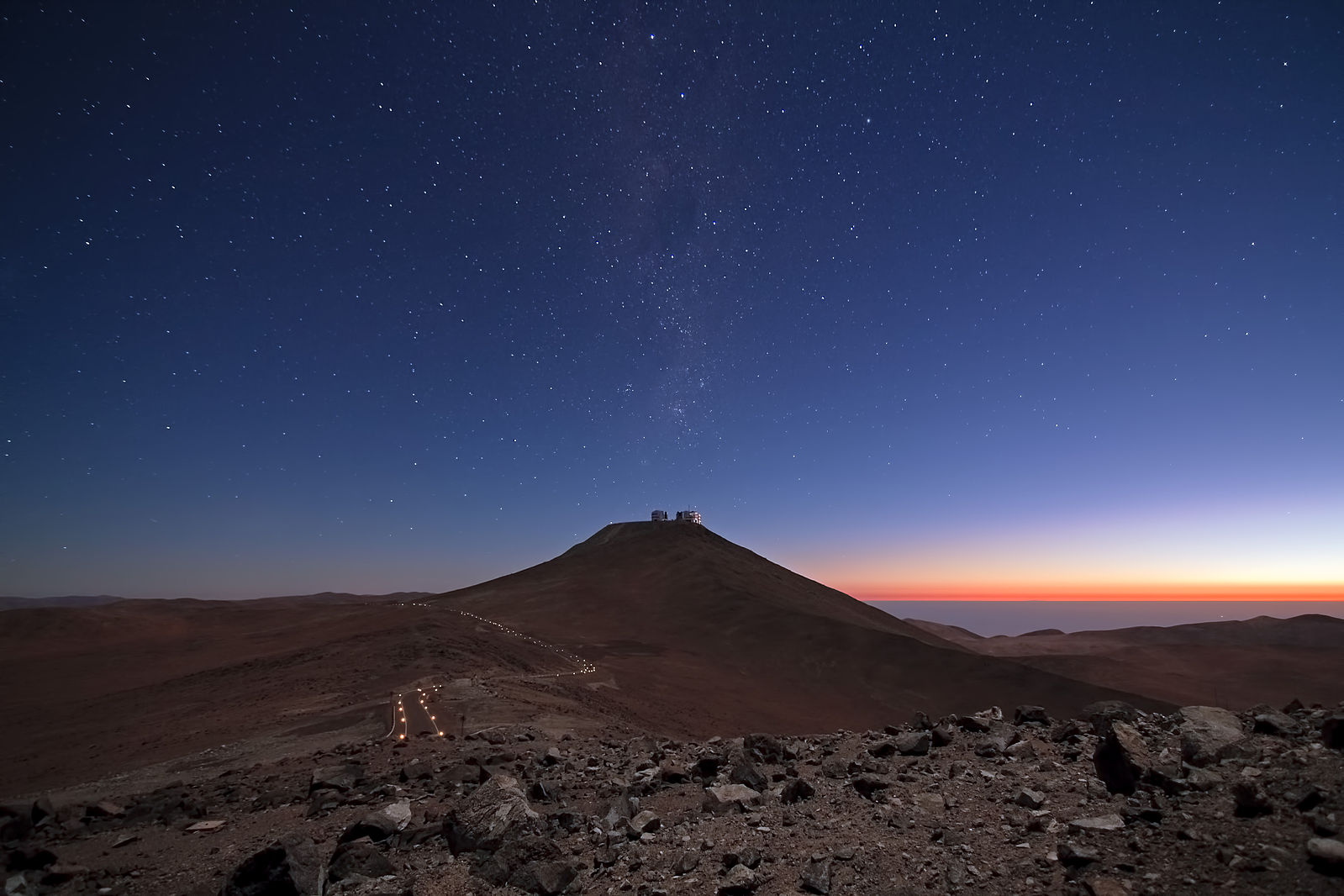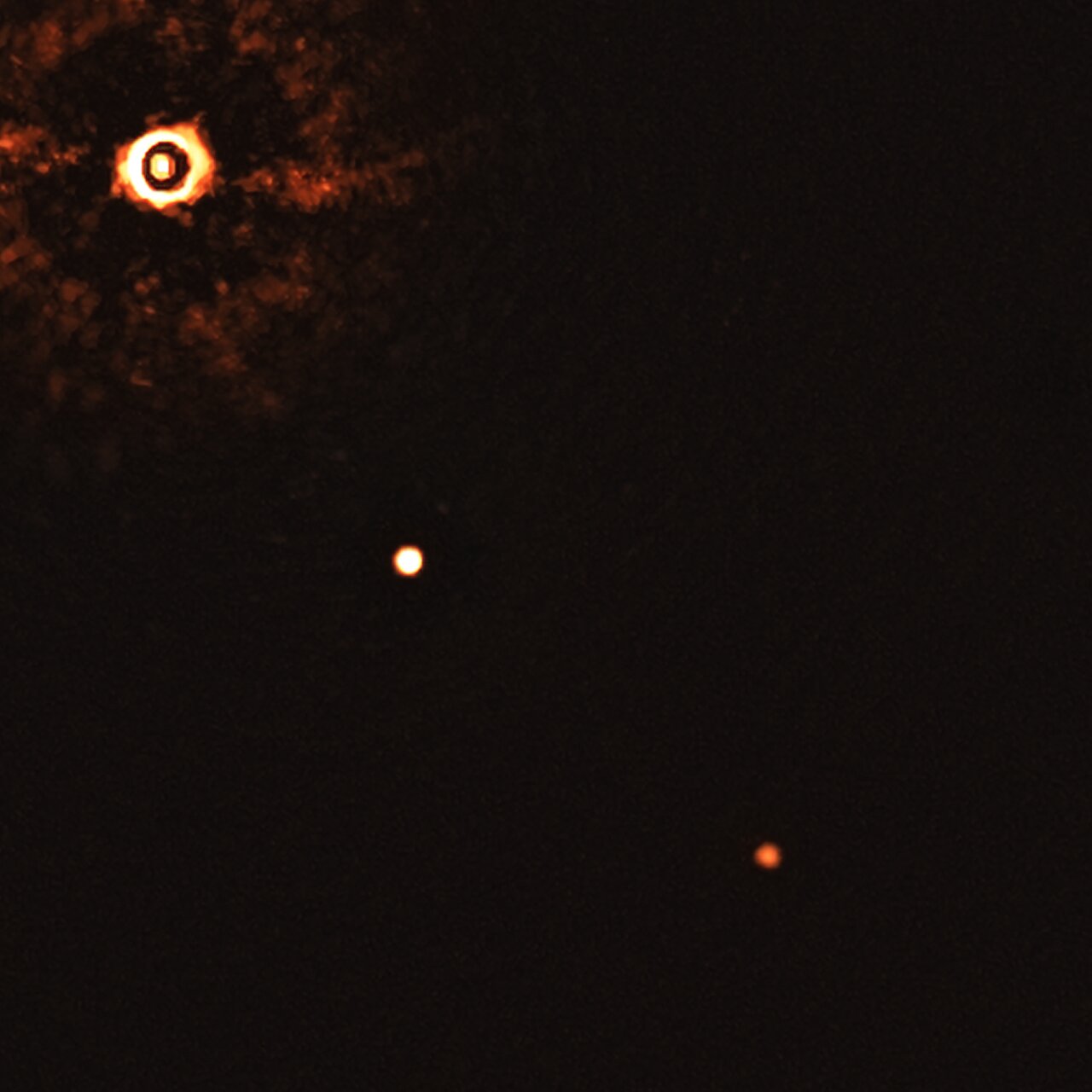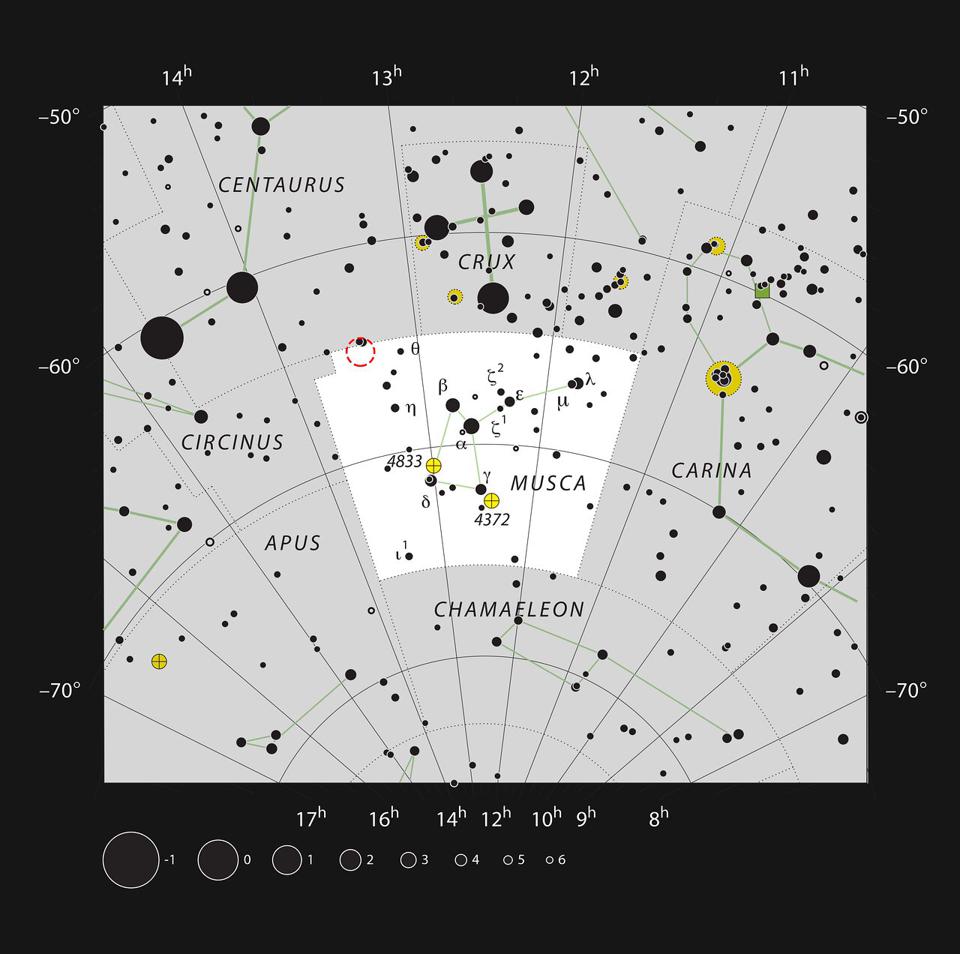
While astronomers have discovered evidence of thousands of exoplanets, obtaining direct images of the distant worlds has always been a challenge. That's because the planets tend to huddle close to the star they orbit and often get concealed by their star's dazzling light. Of the handful of images captured, most are of a single planet orbiting a Sun-like star. The only two multi-planet systems photographed feature brown dwarfs, or "failed stars," which are radically different in nature from the Sun. Now, an international team of scientists may have finally captured a young, Sun-like star with two giant Jupiter and Saturn-like planets in orbit.
"Even though astronomers have indirectly detected thousands of planets in our galaxy, only a tiny fraction of these exoplanets have been directly imaged," says study co-author Matthew Kenworthy, associate professor at Netherlands' Leiden University. "Direct observations are important in the search for environments that can support life."

The photo was captured using the Spectro-Polarimetric High-contrast Exoplanet REsearch (SPHERE) instrument on the European Southern Observatory's (ESO) Very Large Telescope in the Chilean Atacama Desert. The powerful device is equipped with a coronagraph to block unwanted light from the host star, allowing the astronomers to view the fainter planets nearby and even capture multiple images at different times to identify the planets and isolate them from stars in the background.
The star system, dubbed TYC 8998-760-1, lies 300 light years away from Earth in the constellation Musca, which is only visible from the Earth's Southern Hemisphere. The stunning image features the dazzling parent star in the top left corner, along with its two planets, TYC 8998-760-1 b (center) and TYC 8998-760-1 c (lower right hand). The two worlds orbit their star at about 160 and 320 times the Earth-Sun distance, respectively. In comparison, Jupiter and Saturn have an orbit of about five and ten times the Earth-Sun distance, respectively. The distant worlds are also far denser than our Solar System's gas giants.

The scientists, who published their findings in the Astrophysical Journal Letters on July 22, 2020, believe that TYC 8998-760-1, which is just 17 million years old, could provide valuable insights into the formation of our Solar System. "It's like a very young version of our own Sun," said Alexander Bohn, a Ph.D. student at Leiden University, who led the new research. "This discovery is a snapshot of an environment that is very similar to our Solar System, but at a much earlier stage of its evolution."
The scientists, who plan to continue observing the TYC 8998-760-1 star system using the ESO telescope and other powerful space instruments, are also curious to investigate if the two planets formed in their current locations or steadily migrated away from the star. They also suspect the system has some smaller, less dense planets that are waiting to be discovered.
"The possibility that future instruments, such as those available on the ELT [Extra Large Telescope], will be able to detect even lower-mass planets around this star marks an important milestone in understanding multi-planet systems, with potential implications for the history of our own Solar System," concludes Bohn.
Resources: Forbes.com, ESO.org,
